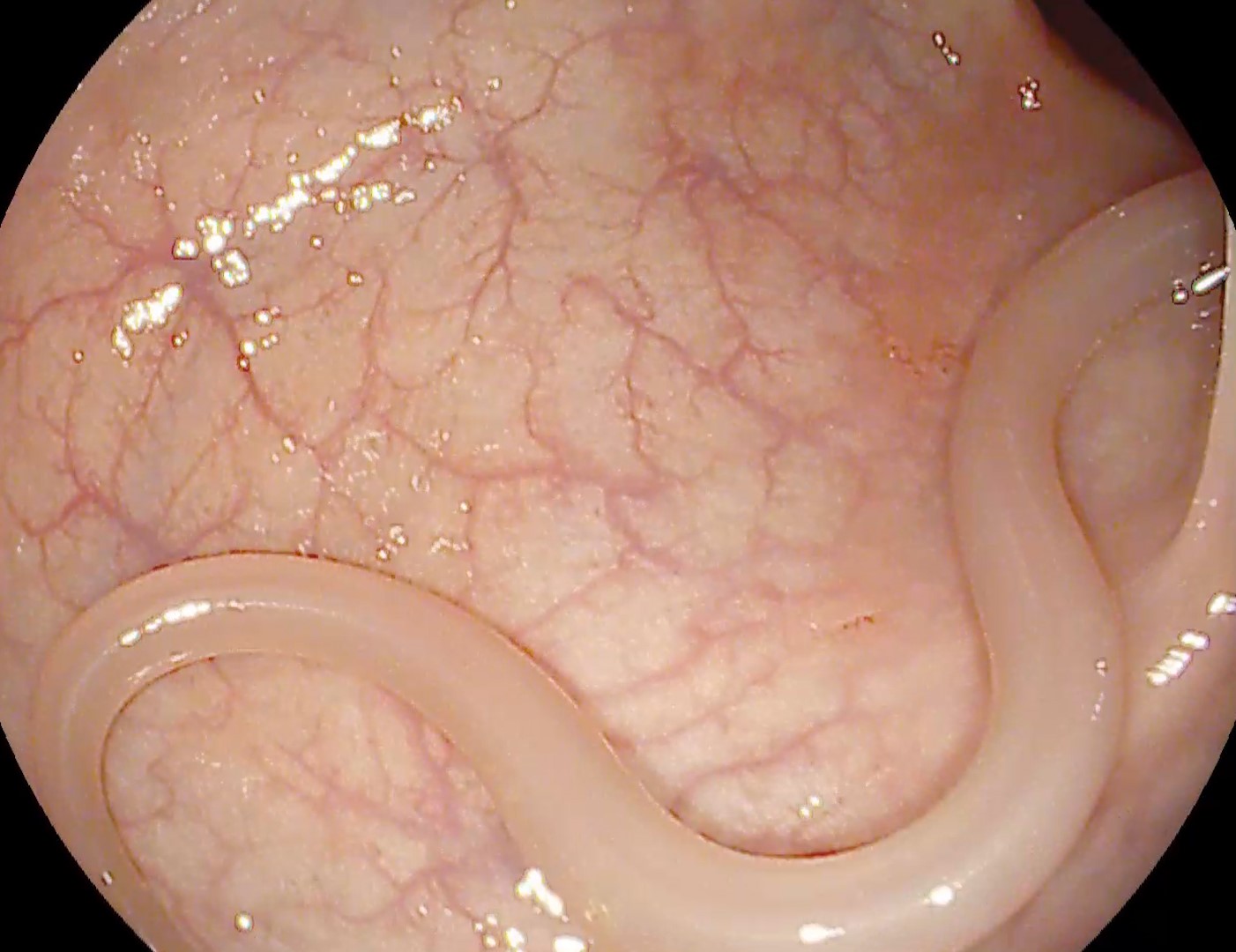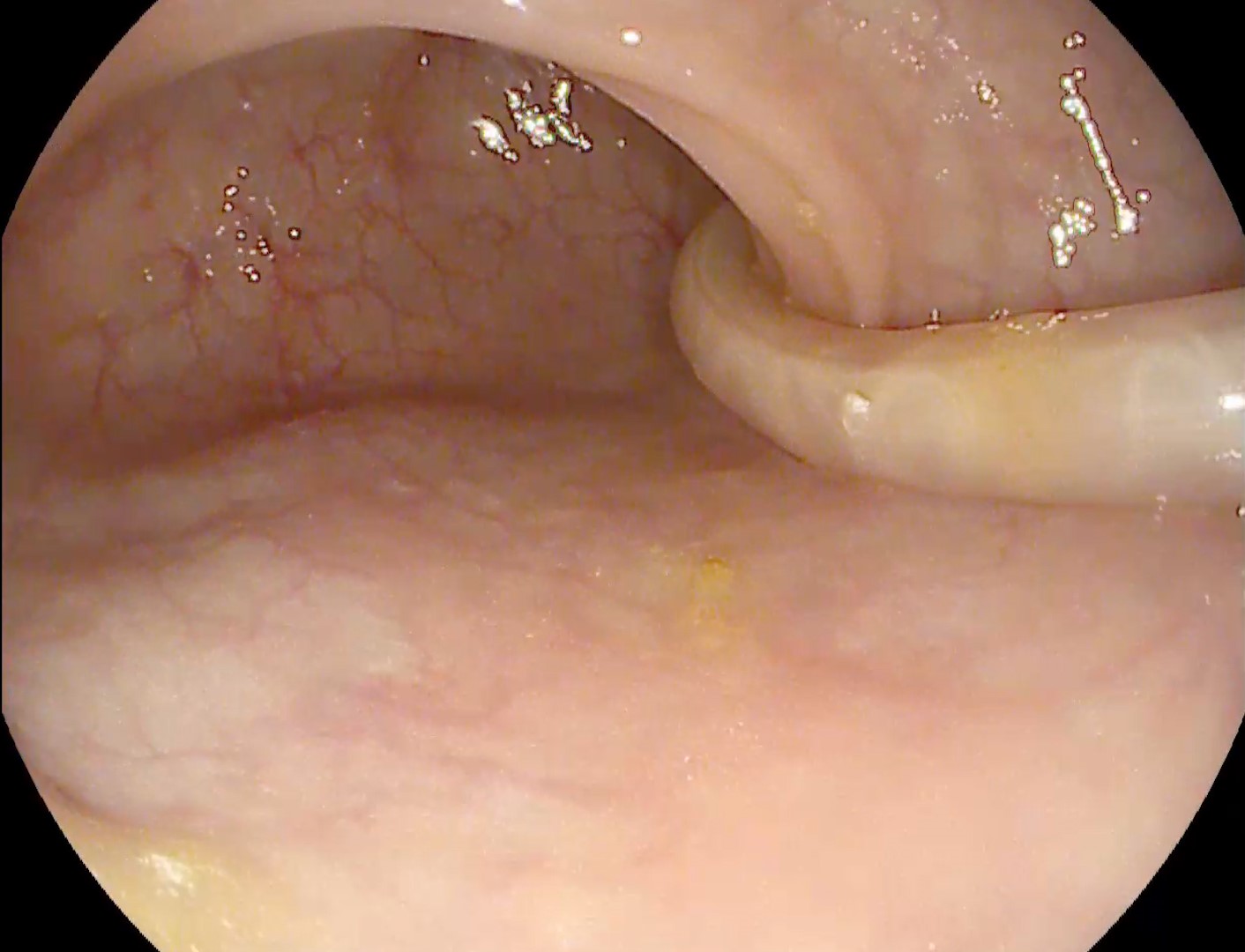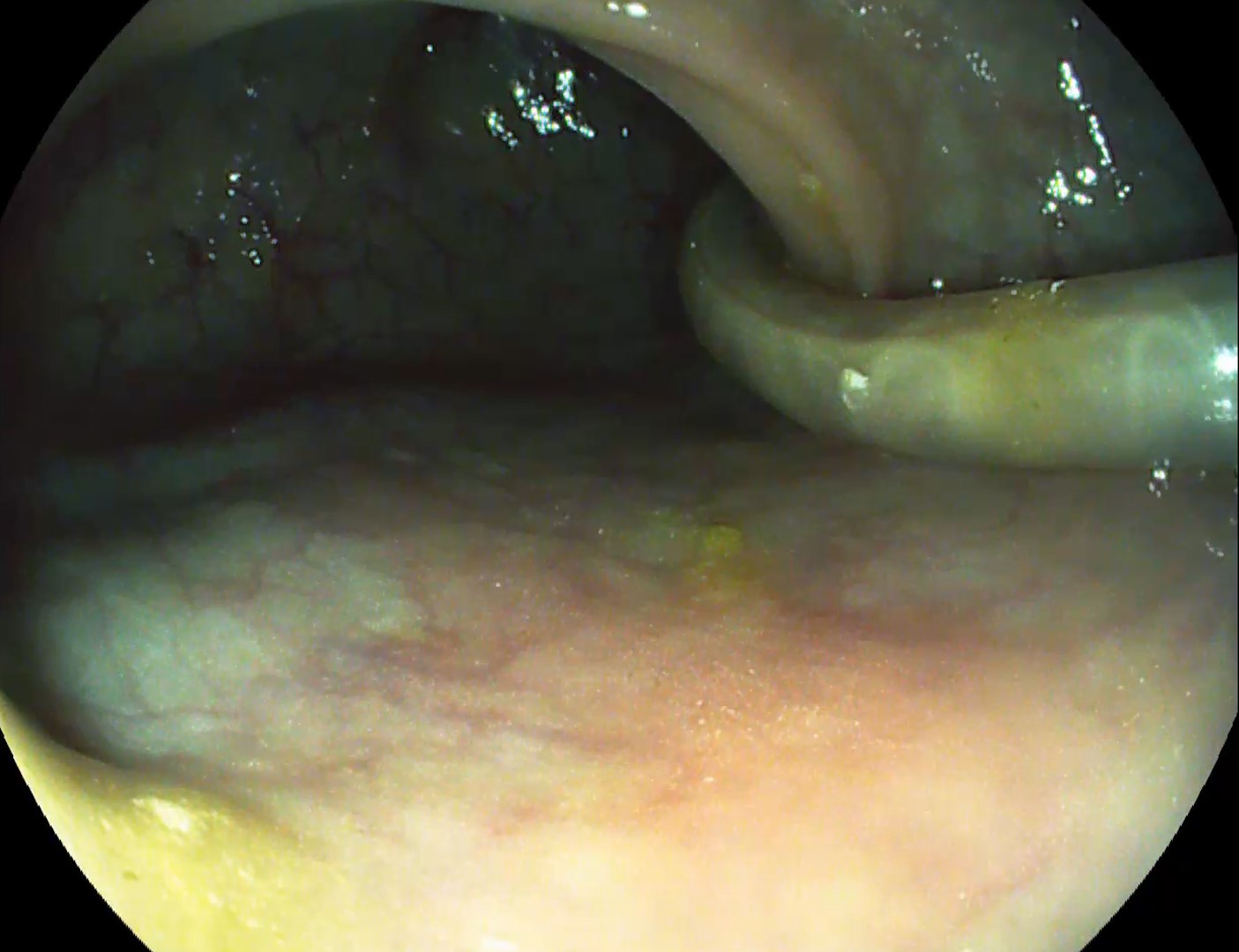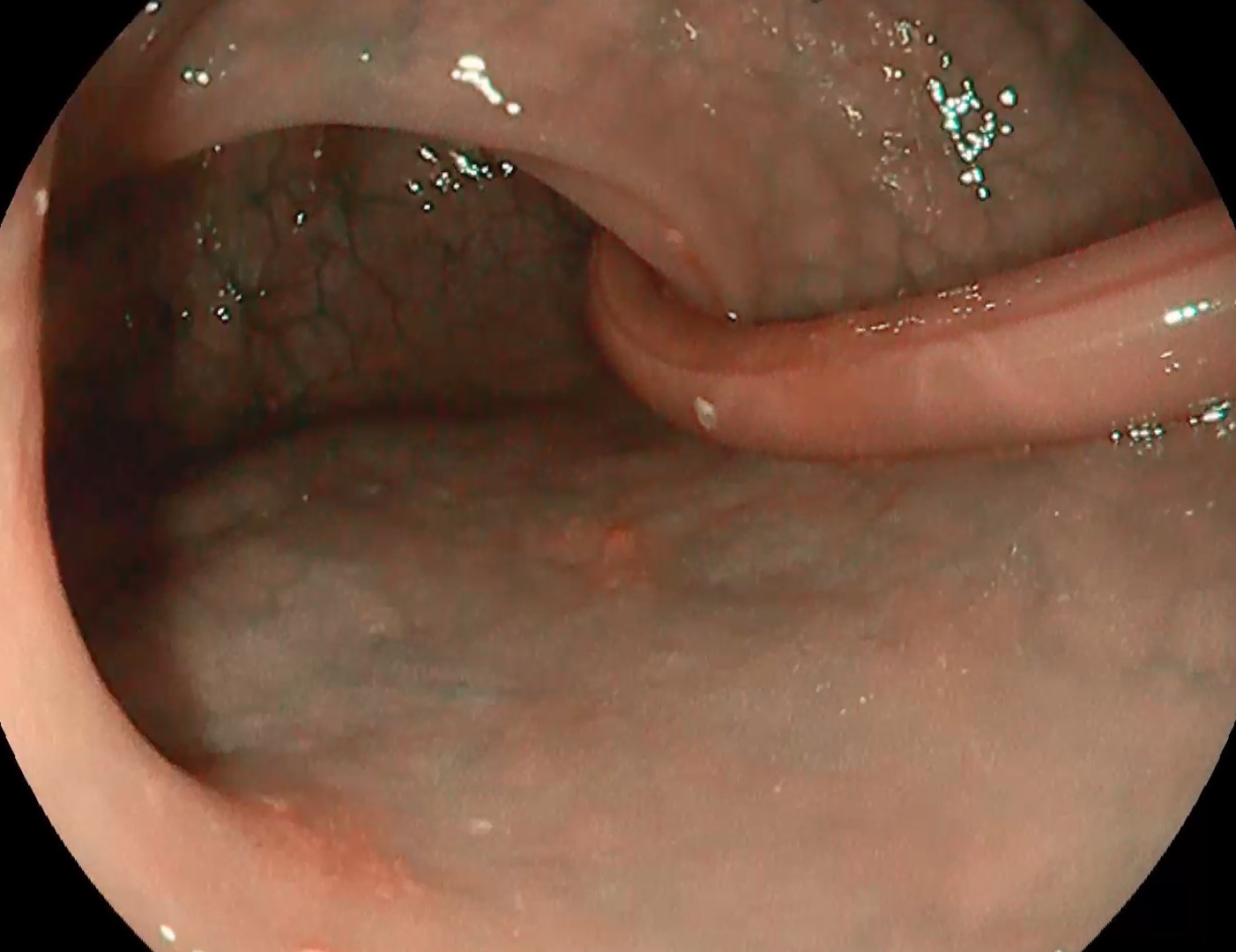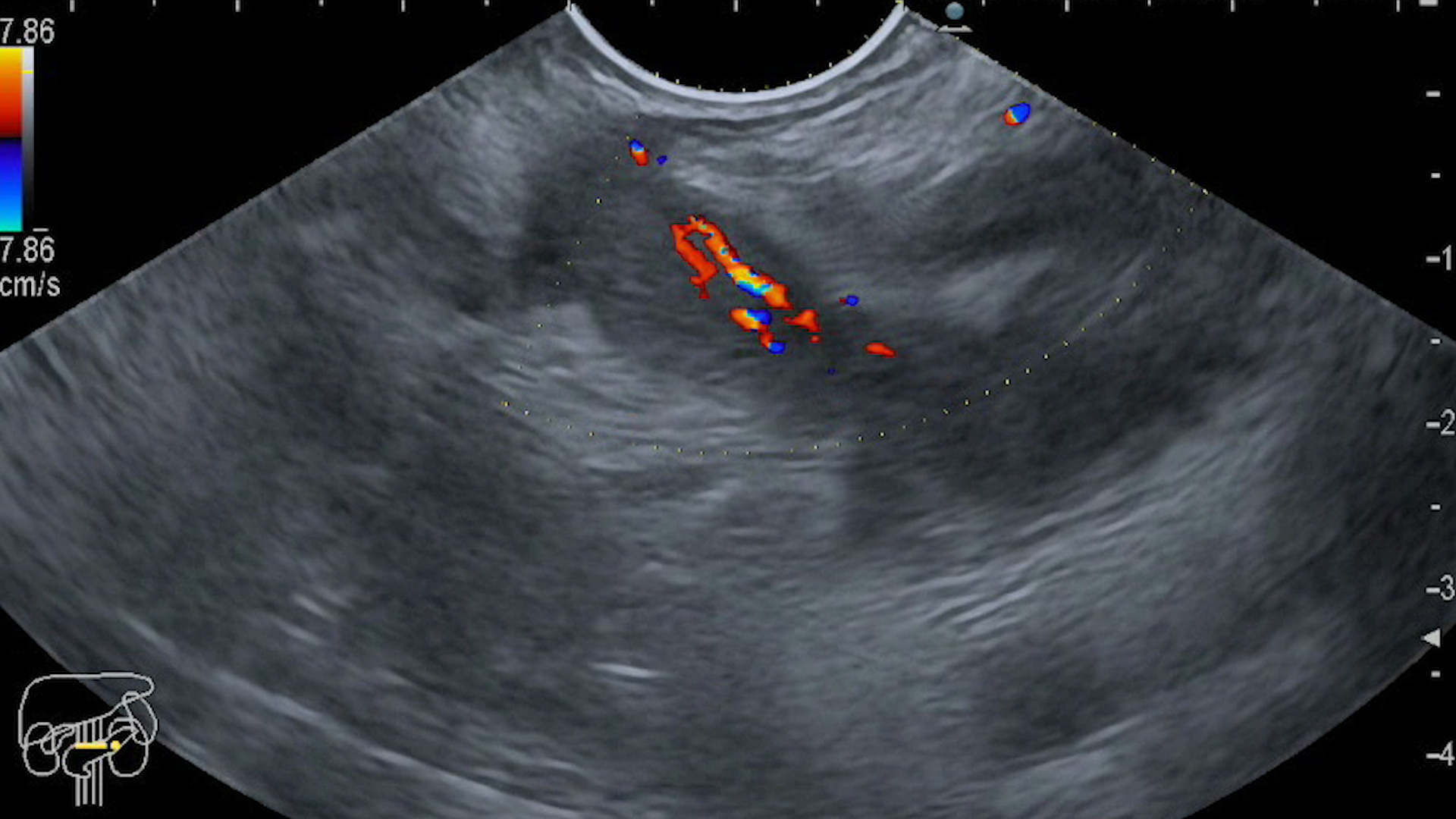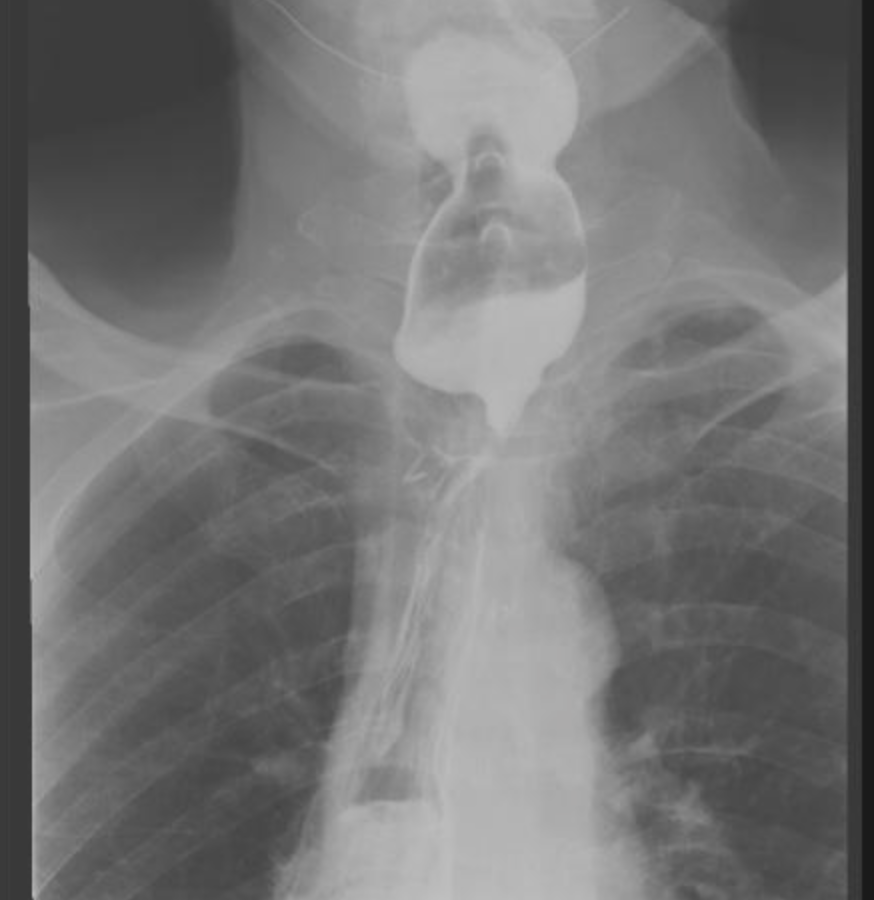See other cases
Catch me if you can!
A 45-year-old woman, with no significant past medical history, was referred to our gastroenterology practice for a screening colonoscopy.
Within normal limits.
At the rectal level, a live parasite was identified, with a length of ~ 20 cm and a diameter of ~ 5 mm, cylindrical in shape, fusiform (pointed at both ends), translucent with a pinkish tint and a smooth surface. The macroscopic characteristics observed during the endoscopic examination allow its identification as Ascaris lumbricoides – a parasitic nematode responsible for one of the most widespread helminthic infections -ascariasis.No endoscopic extraction maneuvers were performed. The patient received treatment with albendazole 400 mg, a single dose, to eliminate the intestinal parasite spontaneously through the stool.
Adult worms encountered during colonoscopy or expelled from the anus can be identified using the classical characteristics of the Ascaris lumbricoides parasite as described above. No further tests were needed to confirm ascariasis.
Ascariasis is a parasitic disease, common to humans and animals, produced by the parasitic cylindrical worm – Ascaris lumbricoides, with a variable clinical picture, depending on the phase of the evolutionary cycle. Due to a large number of asymptomatic patients with intestinal ascariasis (over 85%), these parasitic worms are occasionally discovered by accident during routine endoscopic examinations. In symptomatic forms, the severity of the clinical picture is directly proportional to the parasite load in the intestine. Most frequently, the symptomatology is mild, dominated by non-specific digestive manifestations such as: diffuse abdominal pain, loss of appetite, nausea, constipation/transient diarrhea. In exceptional cases, in patients with a large number of intestinal parasitic worms, life-threatening complications such as: intestinal occlusion, volvulus, gangrene and perforation may occur. It should also be mentioned the possibility of adult parasitic worms migrating to the bile ducts or pancreatic duct, with the appearance of cholangitis, pancreatitis or other severe complications, situations rarely encountered in medical practice.
In short, intestinal parasitic infections, such as ascariasis, are a significant global health issue, particularly in rural and urban areas of tropical and subtropical developing countries. Patients may present with vague nonspecific abdominal symptoms, or the adult worm may be incidentally discovered during a routine endoscopic procedure. Making the diagnosis depends on the timing of the life cycle. For instance, eosinophilia is typically present only during migration of the larvae to the lungs, and stool microscopy will reveal ova only during the intestinal phase. Treatment of patients is essential as, without it, Ascaris lumbricoides will continue to cause repeated complications throughout the life cycle.
- Garcia LS. Practical Guide to Diagnostic Parasitology. Second ed. Washington DC: ASM Press; 2009.
- Kanneganti K, Makker JS, Remy P. Ascaris lumbricoides: To Expect the Unexpected during a Routine Colonoscopy. Case Rep Med. 2013;2013:579464.
- Chiappe A, Arteaga K, Resurrección C, Ñavincopa M, Ticona E. Obstrucción intestinal porAscarislumbricoidesen un adulto mayor [Intestinal obstruction due to Ascaris lumbricoides infection in a geriatric patient]. Rev ChilenaInfectol2016;33:572-575.


